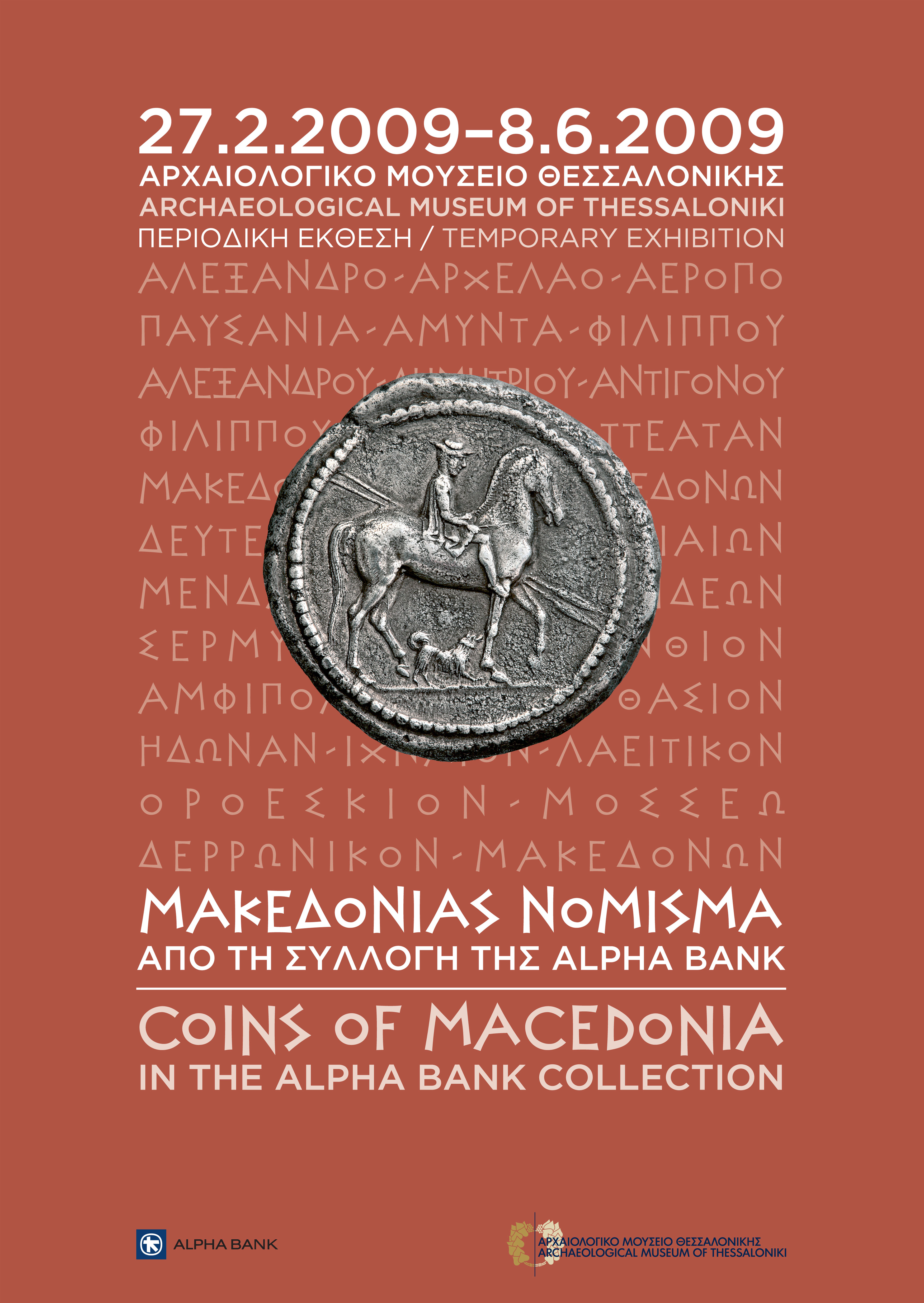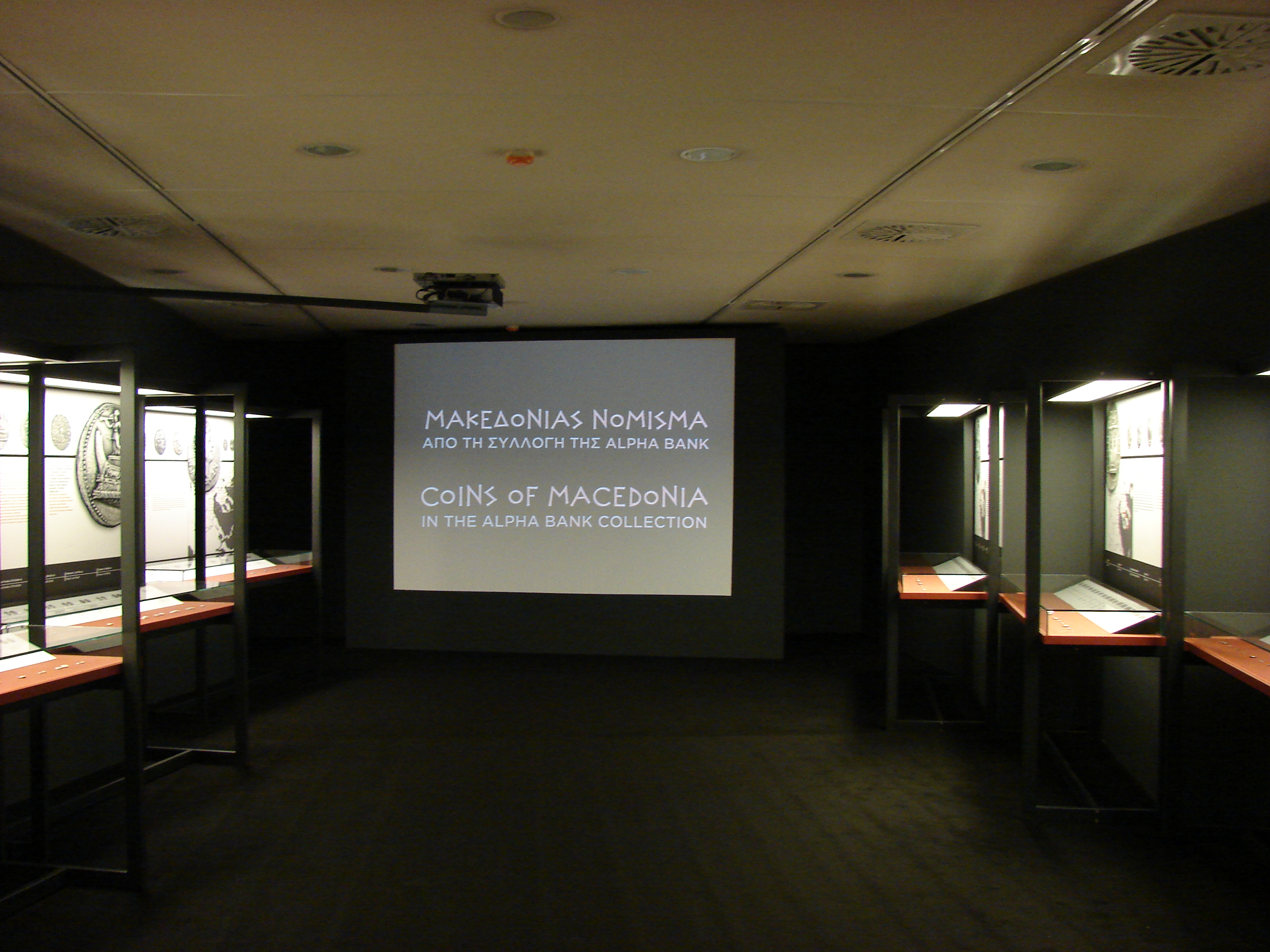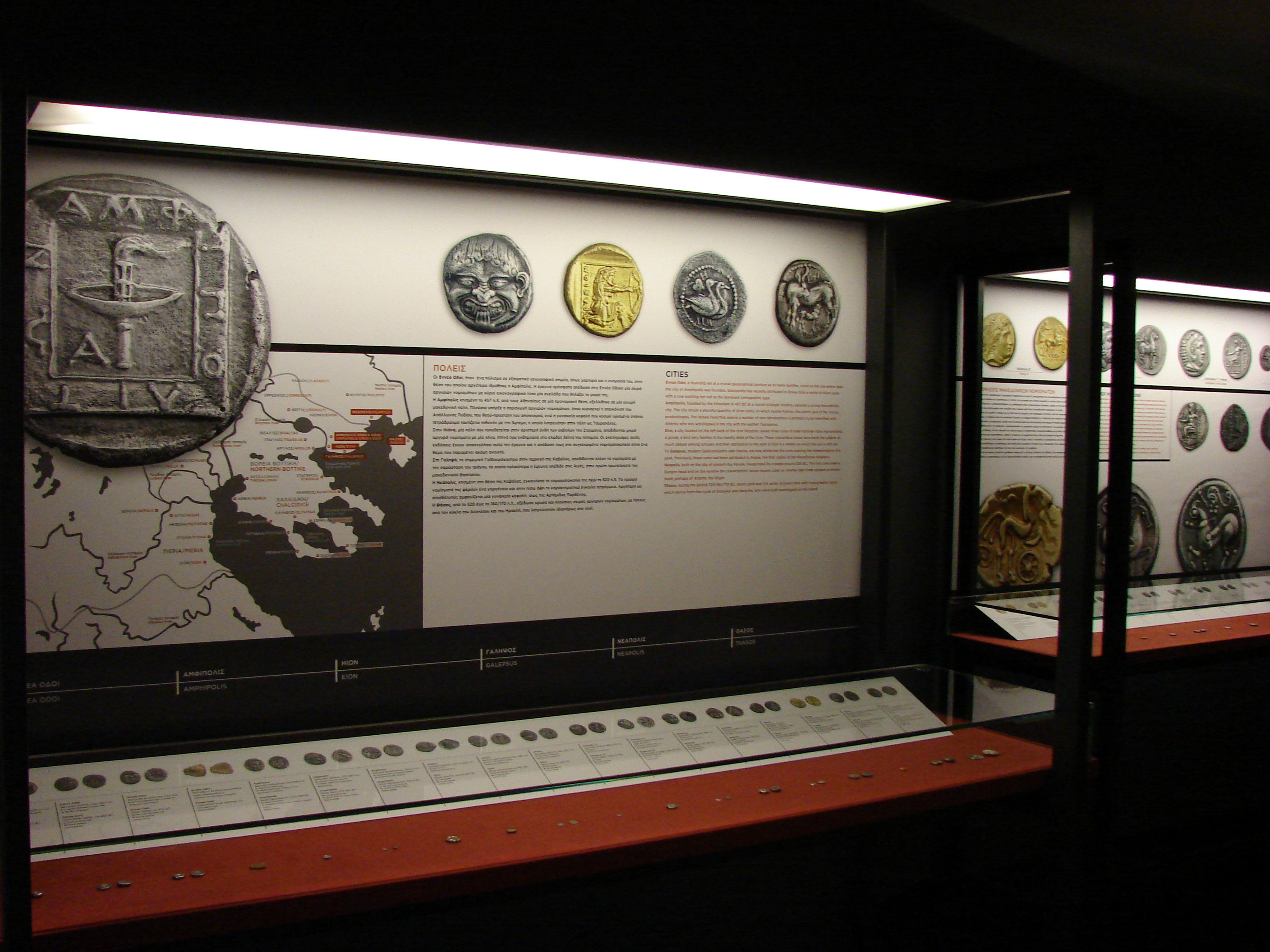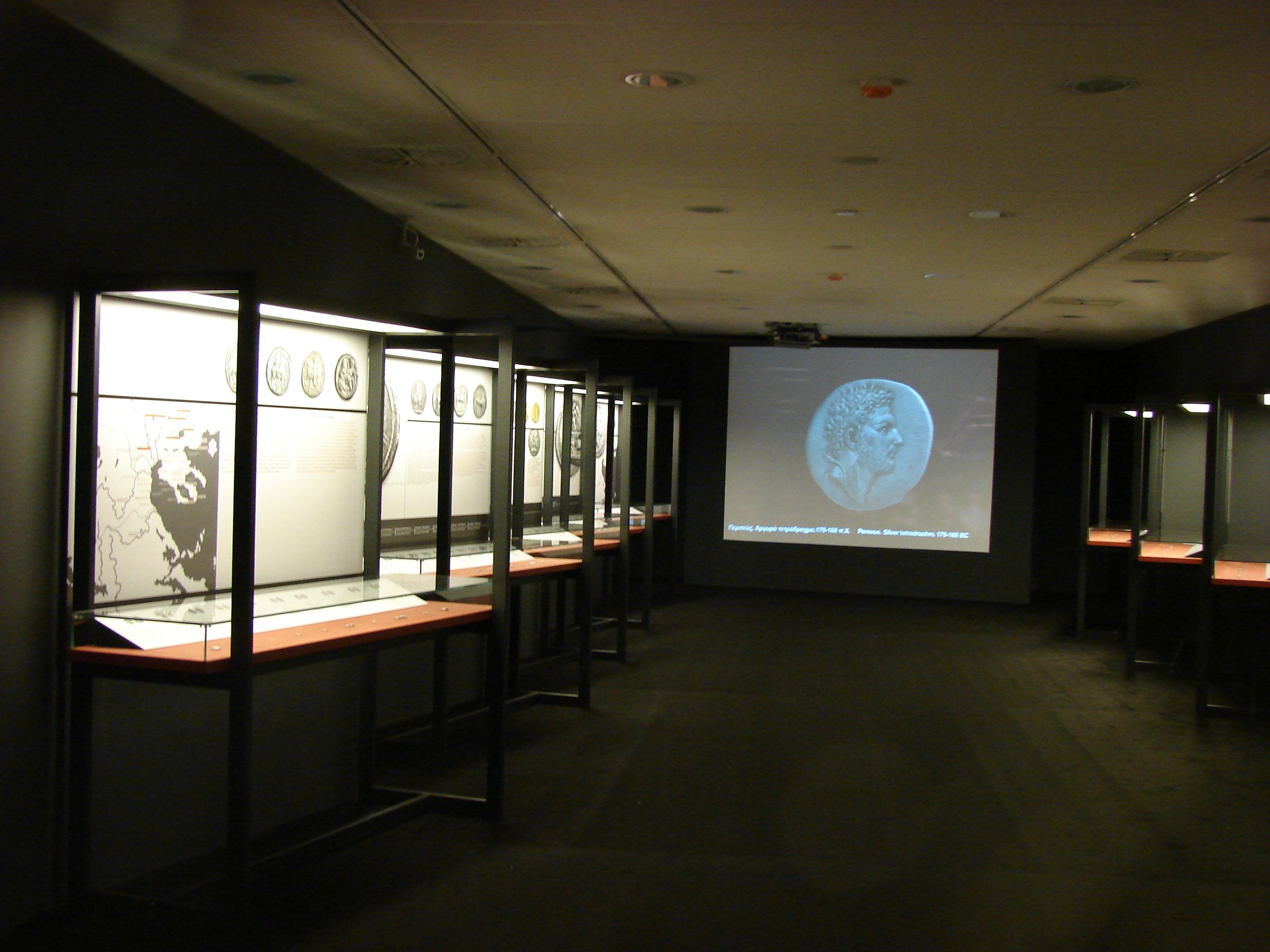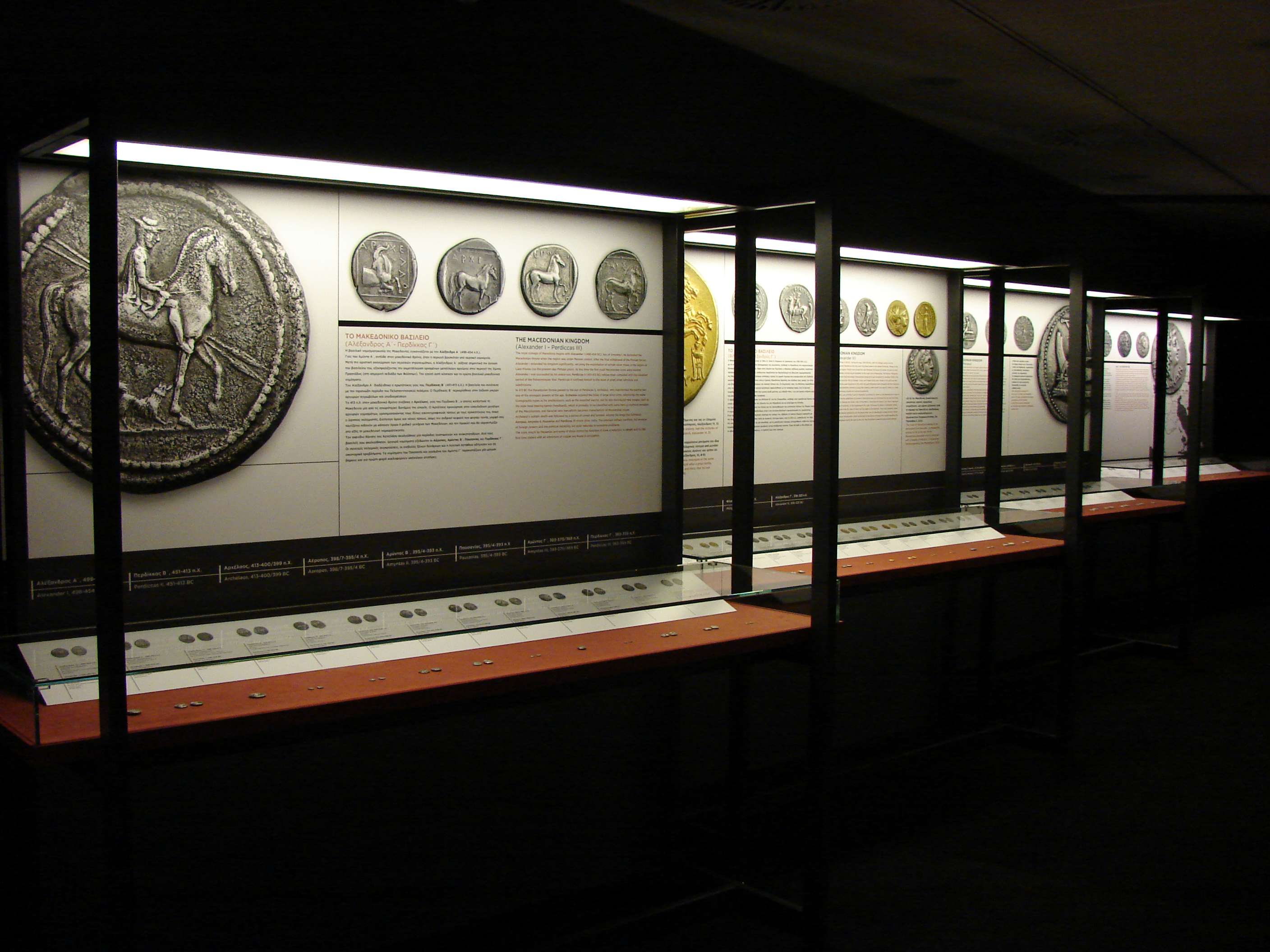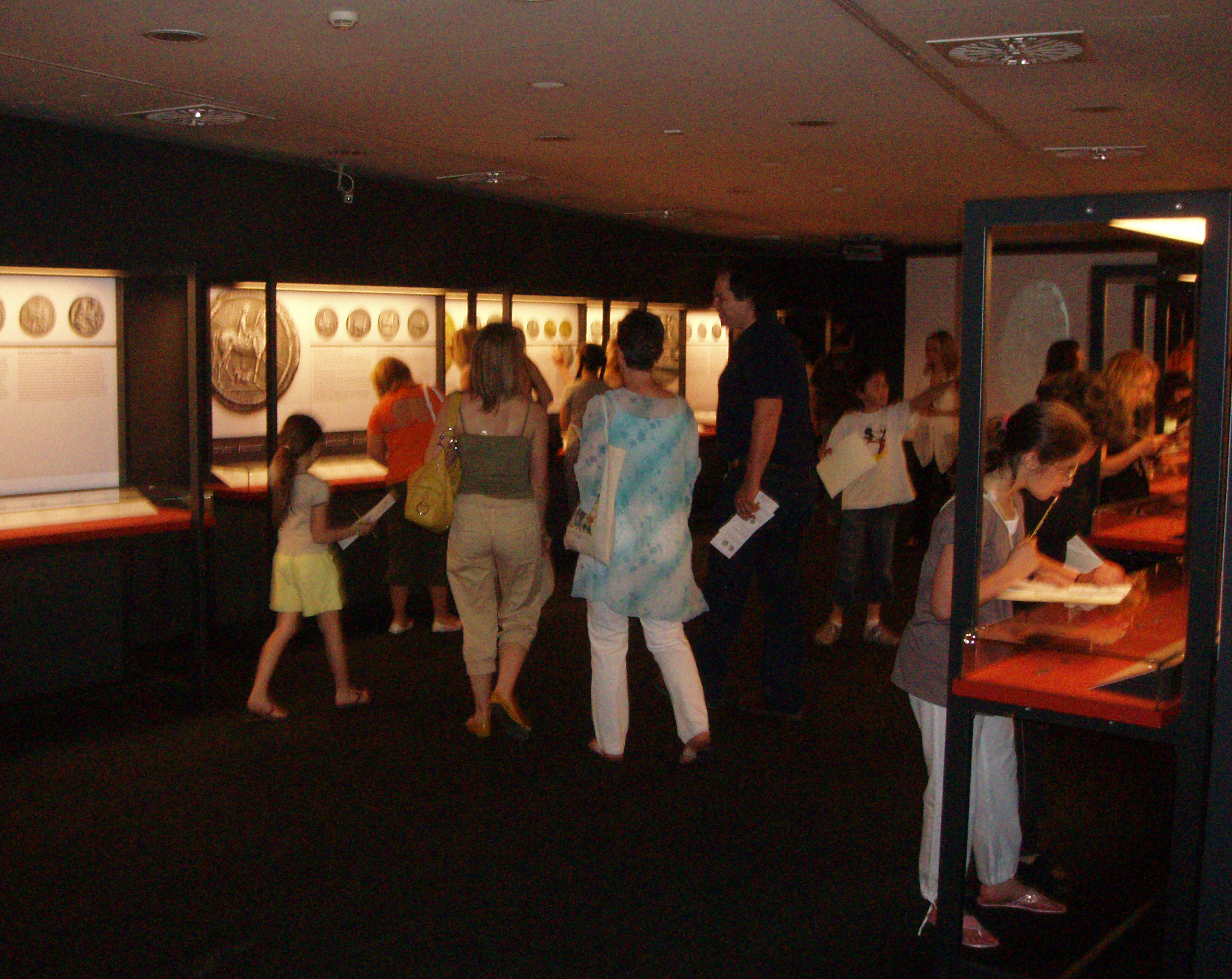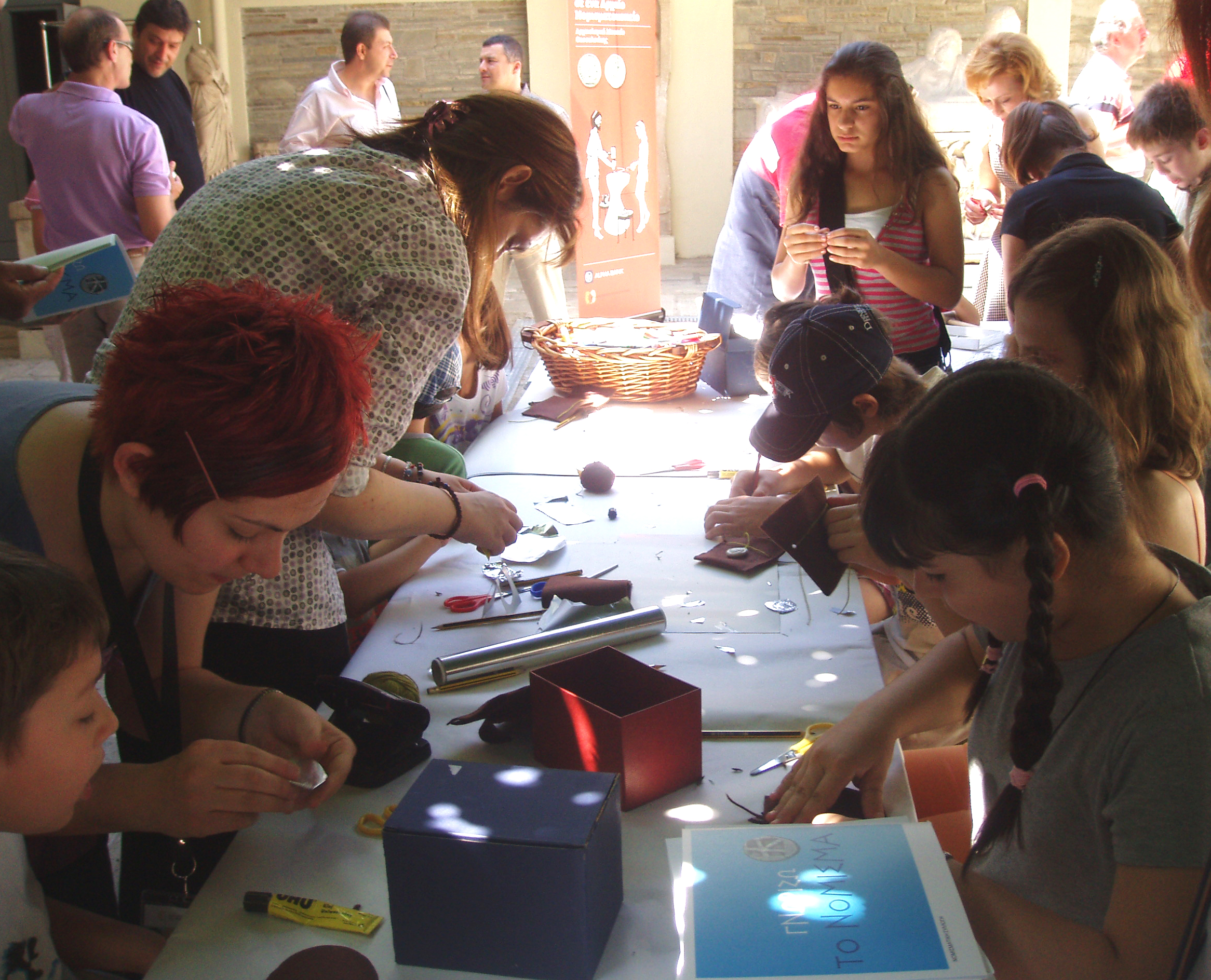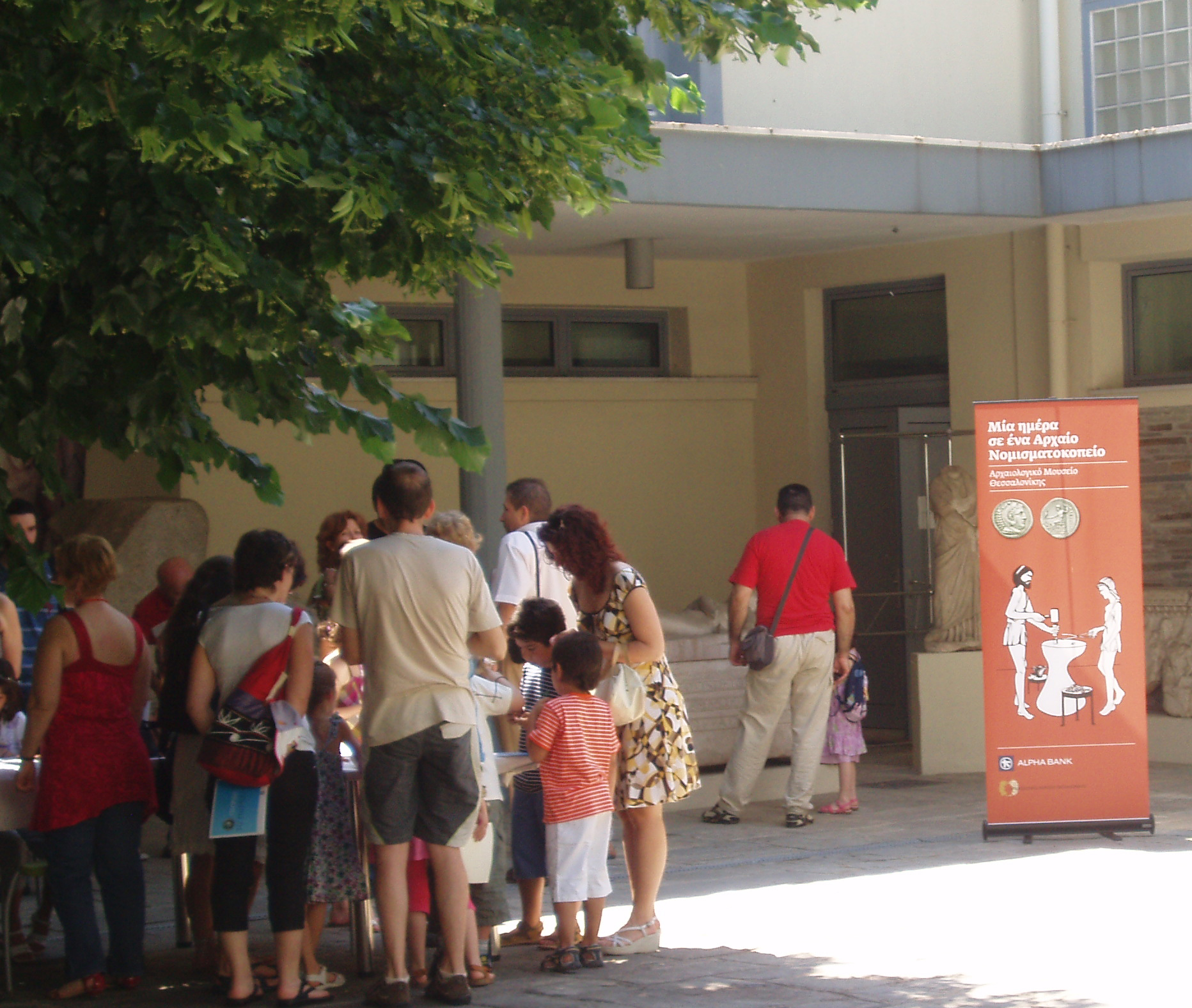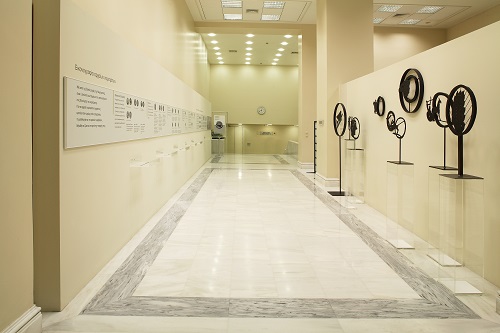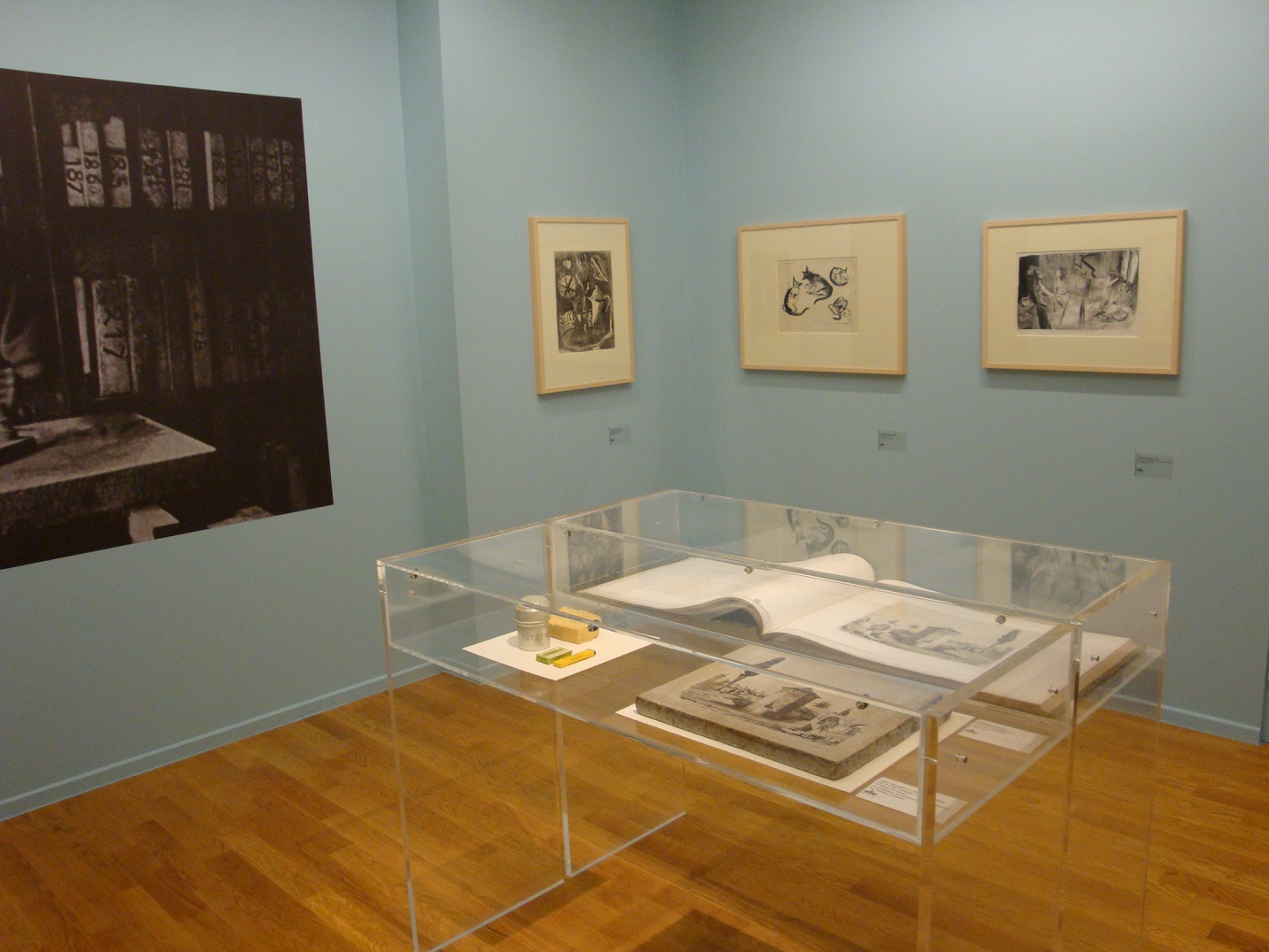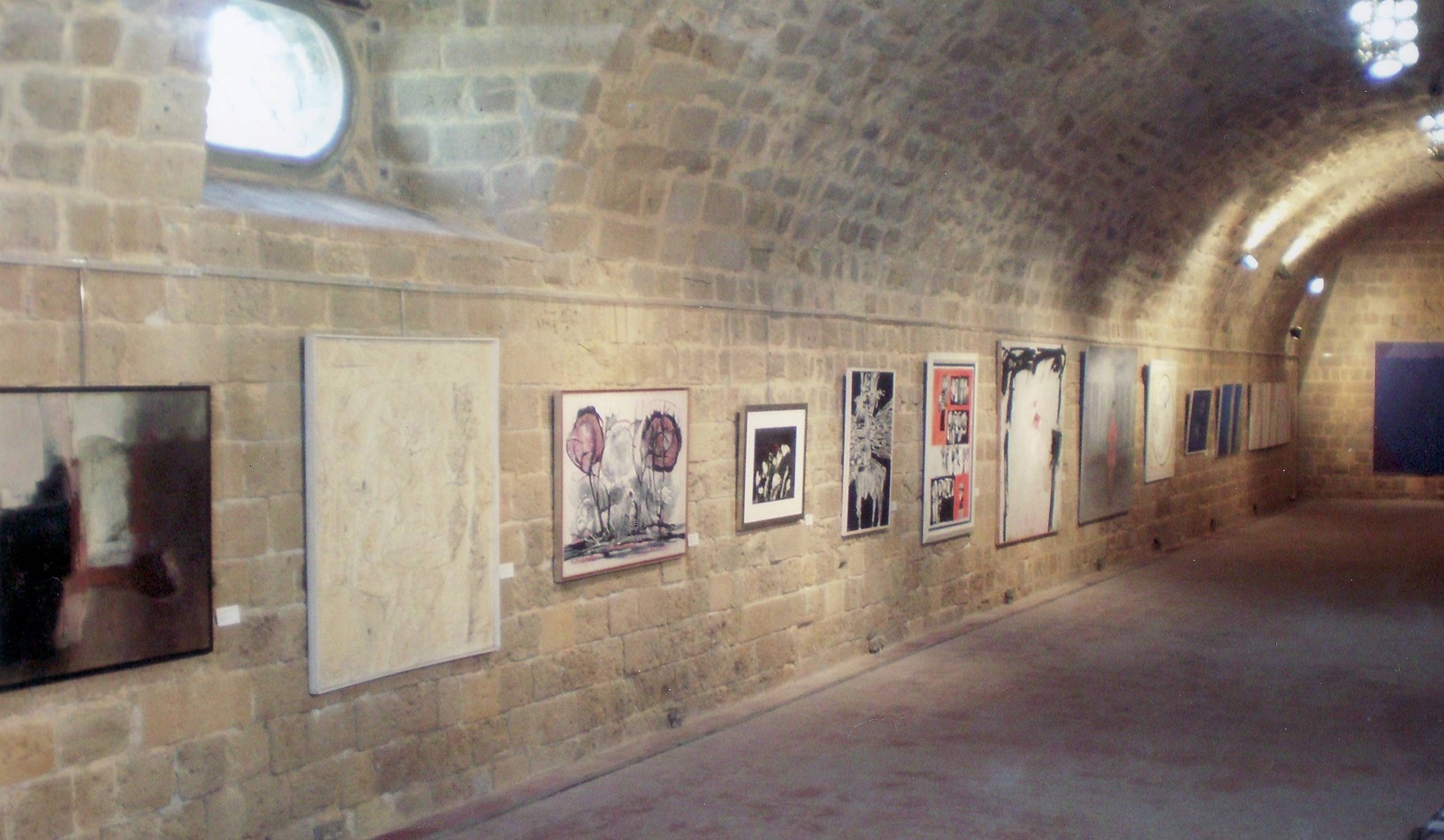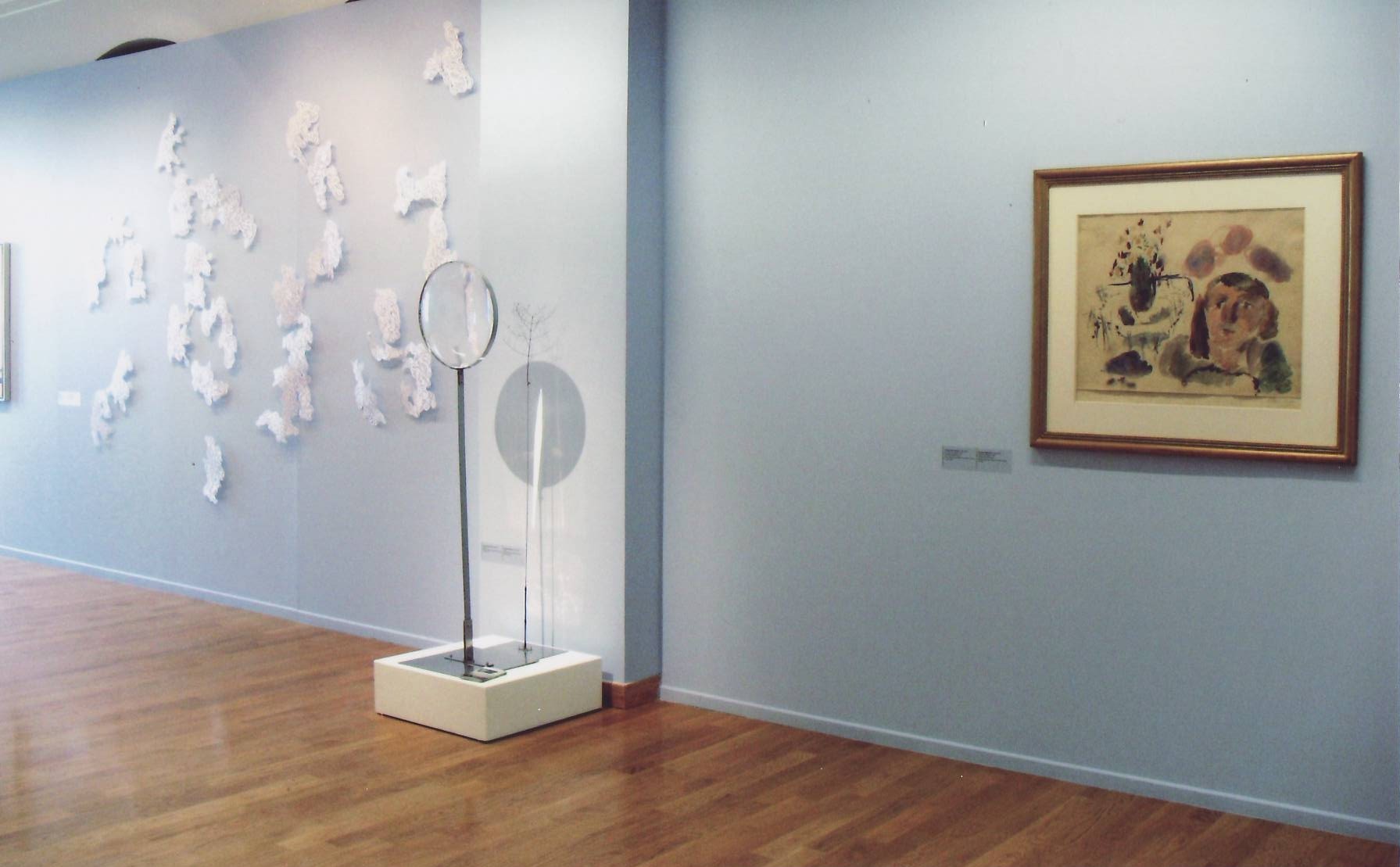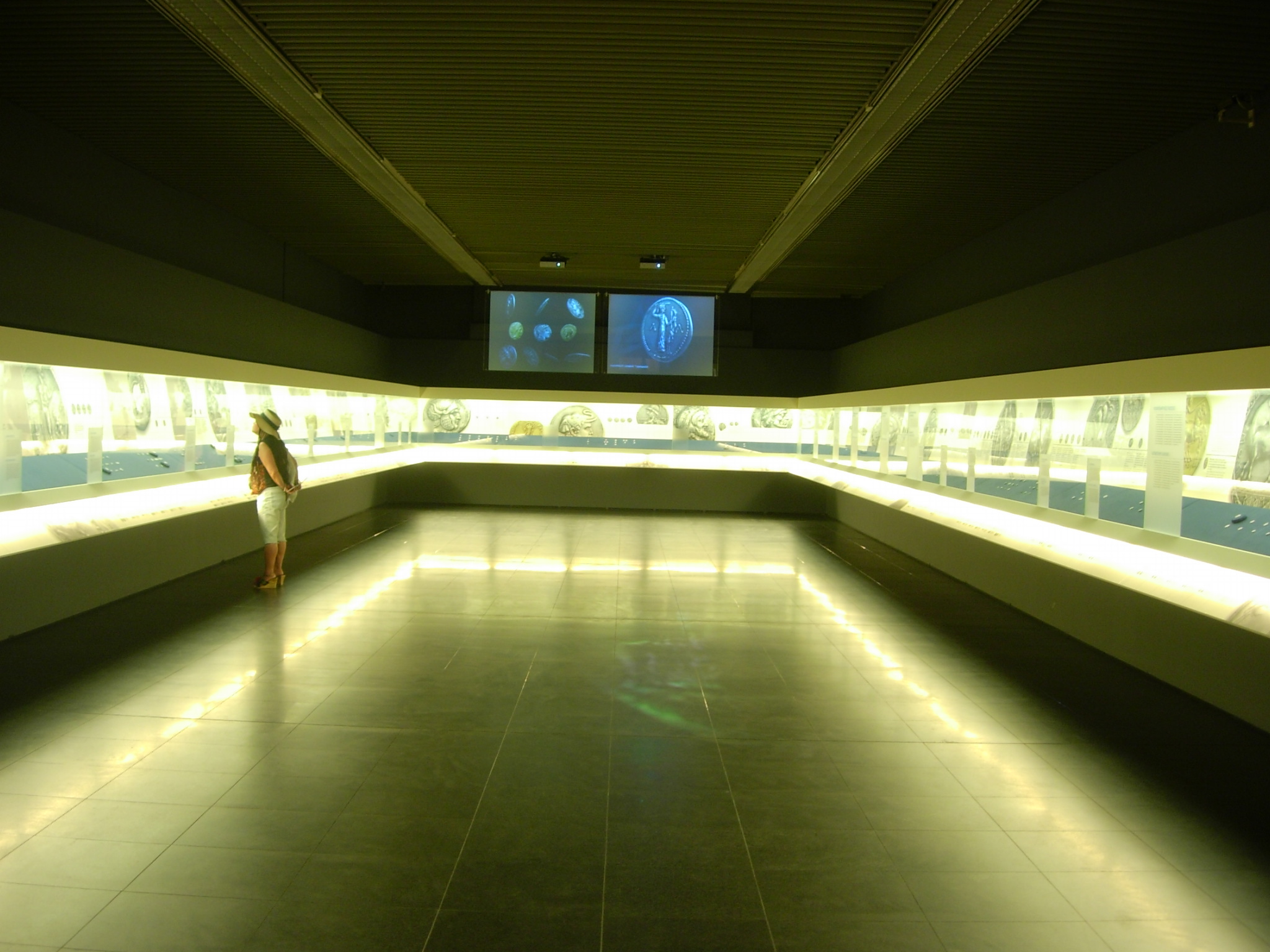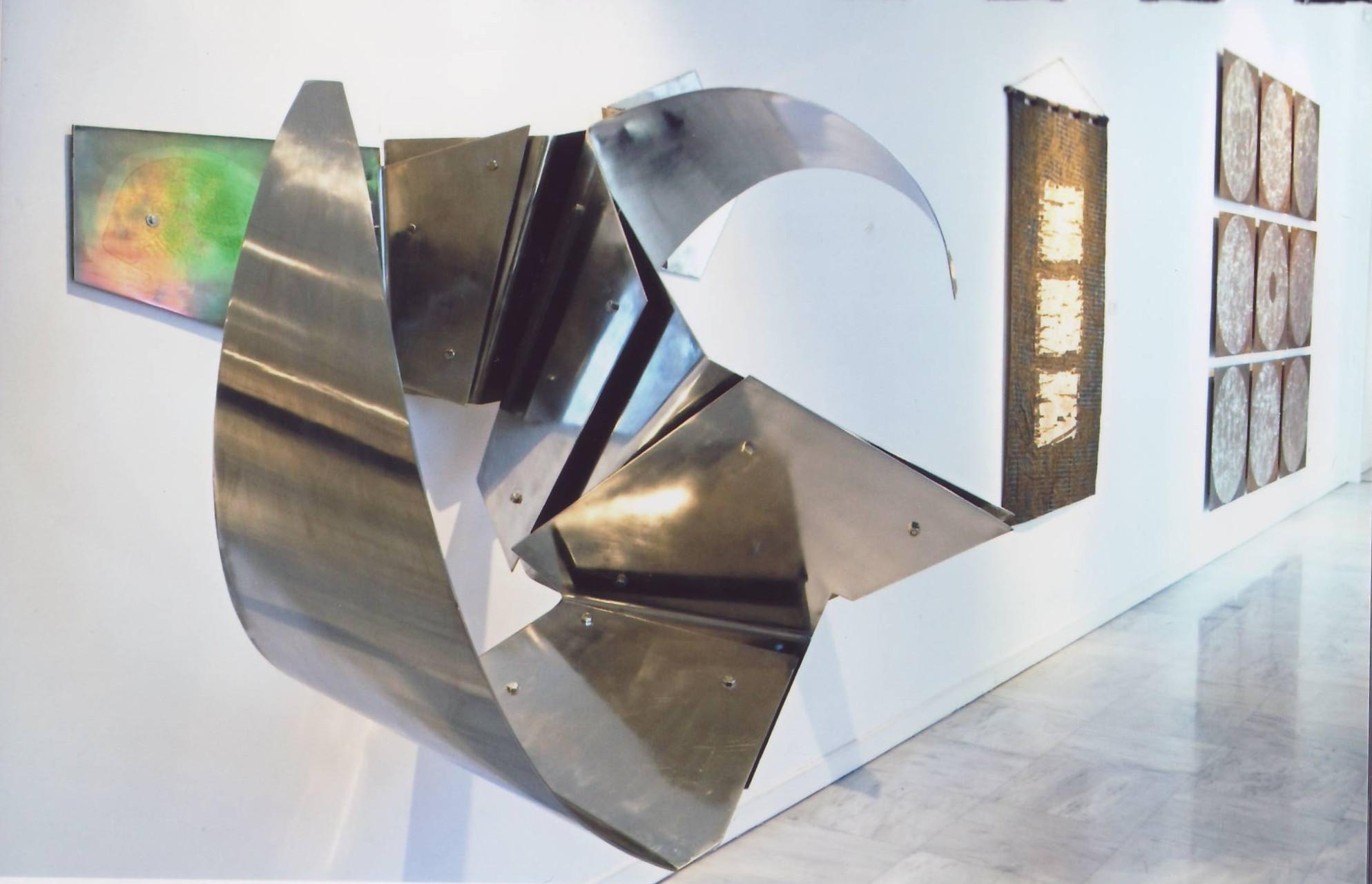ENDED
Exhibition “Coins of Macedonia in the Alpha Bank Collection”
The exhibition “Coins of Macedonia in the Alpha Bank Collection” presents the history of coinage in Macedonia, one of the first areas in Greece to adopt coinage. It showcases for the first time in Thessaloniki 270 gold and silver coins of Macedonia from the Alpha Bank Numismatic Collection.
The first exhibition in Thessaloniki
The exhibition is hosted by the Alpha Bank Numismatic Collection together with the Archaeological Museum of Thessaloniki. It is the first time the Bank’s Numismatic Collection is presented in Thessaloniki.
The exhibition narrates the history of coinage in Macedonia through 270 silver and gold coins to present.
Macedonia was one of the first areas in Greece to adopt currency, around 525-510 BCE. Its silver and gold mines played a key part in this development.
The history of Macedonian coins
The 5 thematic sections of the exhibition serve the narrative of the history of Macedonian coins in terms of both time and space:
- The Thraco-Macedonian tribes.
- The Macedonian kings.
- The period from 2nd to 1st century BCE.
- The Macedonian cities.
- The imitations.
International currency
A map at the end of the exhibition traces the course of Alexander the Great to the East. The vast State created by the Macedonian king spanned 3 continents: from the Carpathian Mountains and the Danube River to the Indus River and Egypt.
In this territory Alexander the Great established a common currency which acquired international status during the Hellenistic period, the tetradrachm of Alexander. This coin was initially issued to meet the huge needs of the State to pay mercenaries.
The map also shows the mints that minted this common coin, with the same patterns and weight, following the widely accepted weight standard. In fact, these mints kept on minting coins even after Alexander the Great had passed away.
The Thraco-Macedonian tribes
The exhibition showcases the coins of Thraco-Macedonian tribes, that is people inhabiting central and eastern Macedonia.
Their history and even their precise geographical distribution present significant gaps and information about them is extremely limited.
In certain cases, knowledge about the Thraco-Macedonian tribes comes from the silver coins they issued.
The Macedonian kings
The exhibition showcases the coins of Macedonian kings.
The royal coinage of Macedonia was launched by Alexander I (498-454 BCE), who ascended to the Macedonian throne when the area was under Persian rule.
It ended with Perseus (179-168 BCE), the last Macedonian king. His life was marked by the resistance to the Roman invasion in the Greek territory.
The period from 2nd to 1st century BCE.
The exhibition presents the Macedonian coins of the last 2 pre-Christian centuries. This is particularly interesting, as the dating of certain issues is still open to research.
The exhibits refer to 3 periods:
- Last years of the Macedonian kingdom.
- Period after 168 BCE, when Macedonia was divided into 4 independent provinces, called merides (portions).
- Period after 148 BCE, when the area was annexed to the Roman state under the name “provincial Macedonia”.
The Macedonian cities
The exhibition showcases coins of Macedonian cities by geographical area.
At the end of the 6th century BCE, certain Macedonian cities put into circulation the first silver coins in the area. Among them were Vergi, Aenea, Mendi, Potidaia, Skioni and Akanthos.
In the beginning of the 5th century BCE, almost all Macedonian cities minted their own coins.
The imitations
The exhibition showcases imitations of Macedonian coins.
These are coins that circulated centuries after the initial circulation of the original ones and demonstrate the importance of Macedonian coins.
The coins of Philip II and Alexander the Great inspired foreign tyrants and far-away people, who copied Macedonian coins.
Scientific team and contributors
Exhibition curators:
- Dr Dimitra Tsangari, curator of the Alpha Bank Numismatic Collection.
- Dr Christos Gkatzolis, Head of the Public Relations, Documentation and Publications Department, Archaeological Museum of Thessaloniki.
Artistic and architectural design: Stamatis Zannos.
Guided tours and events
Guided tours for the public and specially organised tours for schools are also available.
The educational programme “A Day at an Ancient Mint” is also carried out during the exhibition. Children have the opportunity to paint and mint their own coin, using copies from ancient dies.
Lastly, Professor Olivier Picard will give a lecture on “Coins of Macedonia”, addressed to the Friends of the Archaeological Museum and executives of Alpha Bank.
Exhibition catalogue
The exhibition is accompanied by the catalogue-album Coins of Macedonia in the Alpha Bank Collection, available in Greek and in English. The catalogue follows the thematic structure of the exhibition. It contains photos of 171 coins, as well as accompanying explanatory texts. It was edited by Dr Dimitra Tsangari.
Buy the publication Coins of Macedonia in the Alpha Bank Collection on the Alpha Bank e-shop.
Press Releases
For more information about the exhibition “Coins of Macedonia in the Alpha Bank Collection”, you may read the relevant Press Releases issued by Alpha Bank:
